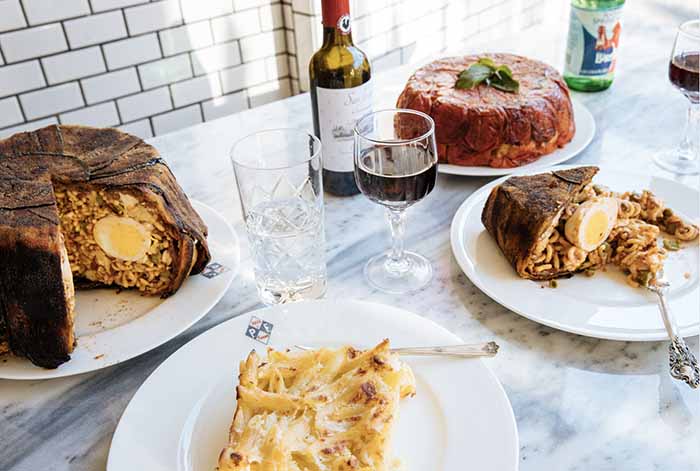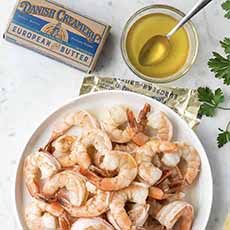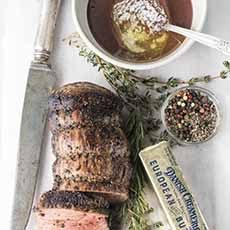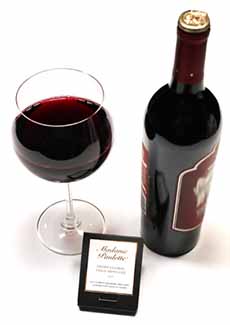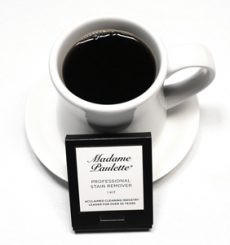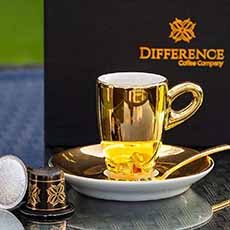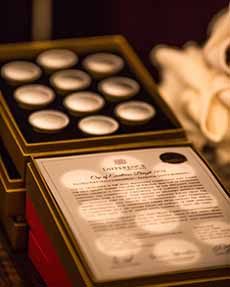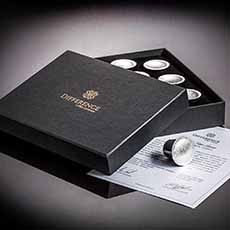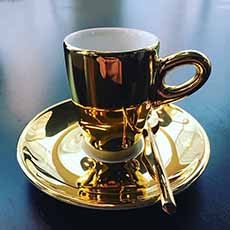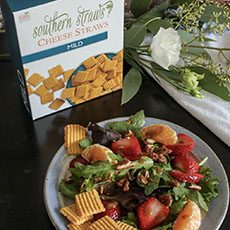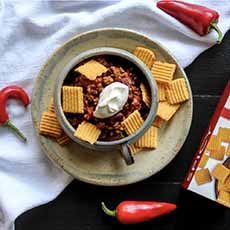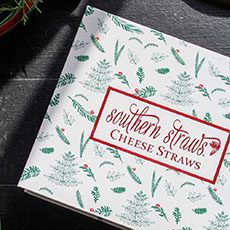|
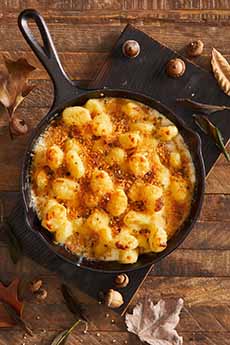
[1] Gnocchi Mac & Cheese. Here’s the recipe from DeLallo (photo © DeLallo).

[2] Eggplant Parmesan Baked Ziti. Here’s the recipe from DeLallo (photo © DeLallo).

[3] An easy Rigatoni Pie! Here’s the recipe from Just A Taste (photo © Just A Taste).
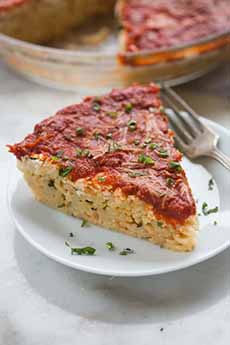
[4] If you prefer, Spaghetti Pie! Here’s the recipe from Tastes Better From Scratch (photo © Tastes Better From Scratch).

[5] One of the baked pasta dishes from P.F. Pasta Al Forno in New York City: thin crepes with spinach, ricotta and béchamel (photo © Tina B Photo 2019).
|
|
Al forno is Italian for food that has been baked in an oven. That includes pasta.
We think of most pasta as boiled; that’s the easiest way to make it. Remove it cooked from the pot, add sauce, bring it to the table.
But baked pasta dishes are very popular. Think cannelloni, lasagna, manicotti and ziti, for starters. Most of us order them in restaurants, because it’s more effort to prepare them.
Pasta al forno, pasta from the oven, offers delights that are worth the extra time to prepare them.
The “meaty” texture, the crisp browned edges, the layering of flavors, the different textures and presentations…all opportunities to shine.
Sometimes the pasta is double-cooked: boiled before it is baked. The pasta comes out soft, not with the firm al dente consistency that is standard in boiled pasta dishes.
(And may we add, as someone who drops food on herself: Pasta al forno is not drippy.)
Baked pasta is an opportunity to create dishes with many more ingredients than most boiled pasta recipes.
Layer on meats, vegetables, different cheeses, herbs and spices: Every recipe can present a different story, over, say, Spaghetti Bolognese or Linguine With Clam Sauce.
THE HISTORY OF PASTA AL FORNO
Northern Italy has a tradition of baking pasta in wood-burning ovens.
Pasta was introduced to Italy in the 8th century C.E. (the history of pasta and the history of oven cooking).
In the Middle Ages (5th century to 15th century), baked pasta was an opportunity for chefs to show off their creativity.
Eventually, baked pasta, pasta al forno, was adopted all over Italy.
It traveled from the north to become a staple dish of Southern Italy, where it’s usually made on Sundays, holidays and special occasions.
Sicilians call it piatto unico, “one plate”: One serving is a complete main course of pasta (carbs), protein, vegetables and dairy (cheese) (source).
Wood was the main fuel for large parts of Europe for many centuries. Today, even though more efficient gas, electric, gas and convection ovens are available, some restaurants and home kitchens still use wood burning ovens because they prefer the flavor that a hint of wood provides (source).
BAKED PASTA RECIPES
You can bake any pasta, including mac and cheese and spaghetti.
There are meat-based, seafood-based, vegetarian and vegan recipes. There are even sweet recipes, like this delectable noodle kugel, typically served as a side.
Here are collections of recipes: so much variety that we wanted to eat them all.
Delish.com
Epicurious.com
Food52.com
When you consider baking your own pasta, remember that a lot of what goes into the pan depends on what’s in the refrigerator or pantry, and what’s in season.
In Northern Italy, cooler weather means heartier ingredients: butter, pork fat, heavy starches and meaty ragùs.
In Southern Italy, baked pasta dishes are usually laden with vegetables—bell peppers, eggplant and whatever is in season—as well as local cured meats (sopressata and sausages, for example).
You can add anything you like, from the classics to trendy veggies like cauliflower and kale.
Here are tips for making based pasta from DeLallo Foods.
A PASTA AL FORNO RESTAURANT
Your city may have a restaurant dedicated to pasta al forno.
New York City just received one, P. F. Pasta Al Forno, in the West Village neighborhood of Manhattan.
This baked-pasta-only concept is the first of its kind in New York, honoring the original Pasta Al Forno in Florence, Italy, which operated from 1964 to 2000.
It’s a counter-service restaurant: Place your order for a slice and wait for it to be called. Then, take it home or dine-one of several group tables.
The rustic decor can transport you back to the Old World, with vintage accents, hand-painted menus, and beverages like Lurisia spring water and premium Italian soft drinks (try the arancia rosso, blood orange).
The breadsticks alone worth the trip. They’re free on the tabletops, and so special that we purchased four bags for gifting.
We couldn’t be happier with the food, either.
Vegan and vegetarian options are available, as well as all-vegetable dishes like baked caponata.
While there is lasagna (how could there not be), the other dishes were new to us, and total delights:
Crespelle Alla Fiorentina: crepes with ricotta, spinach, tomato sauce and béchamel (photo #5); there are variations with mushrooms or ragù (meat-based sauce).
Lasagne Alla Bolognese: with the classic ragù as well as al pesto (vegetarian) and di mare (seafood) versions.
Timpano Del Cardinale: a wheel of baked ziti in tomato and basil sauce, mozzarella and Parmigiano, in a shell of dried San Marzano tomatoes (see photo #6, below).
Timballo Di Anellini: a wheel of small ring-shaped pasta in beef ragù with prosciutto peas, smoked mozzarella, and hard-boiled eggs, all wrapped in a shell of prosciutto and fried eggplant hard-boiled eggs (see photo #6, below).
|





